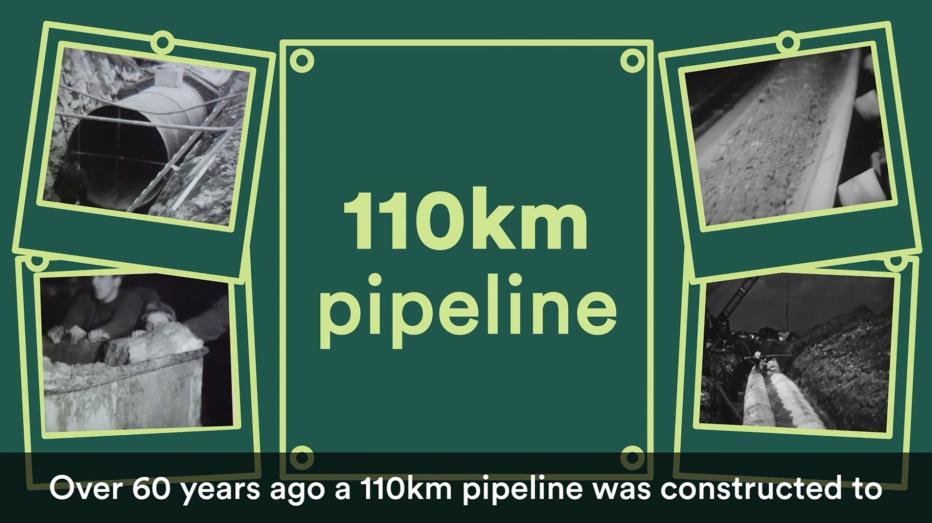
Credit: United Utilities
United Utilities, one of the U.K.’s largest water companies, is replacing all six tunnel sections along the length of a major water supply aqueduct serving 2.5 million people in North West England. Jacobs has supported the client since 2016, working together to ensure the resilience of this critical asset.
-
9
Local planning authority areas, making stakeholder engagement unusually complex
-
2.5 M
Customers supplied by the Haweswater Aqueduct
-
50 km
Length of aqueduct to be replaced (~31 miles)
-
$ 2.1 B
Project capital value (£1.75B GBP)
-
12000
Meters of borehole drilled (149 boreholes)

Credit: United Utilities
Built between 1933 and 1955, the Haweswater Aqueduct has successfully served communities in Cumbria, Lancashire and Greater Manchester for more than 60 years. However, major inspections conducted in 2013 and 2016 raised concerns about the potential future risks of asset failure and the consequences this would bring to the water supply in the region. With the six tunnel sections of the aqueduct (over 50 kilometers, or ~31 miles, in total length) approaching the end of their operational life, United Utilities decided to undertake The Haweswater Aqueduct Resilience Programme (HARP).
This c.£1.75 billion (~$ 2.1B) capital project will replace each of the six tunnel sections, ensuring a safe and secure water supply to people in the region.
Jacobs’ involvement started in 2016. We established a team with the client, United Utilities, to investigate the current and future performance of the asset, potential modes of failure and the likelihood of failure for each section of the aqueduct. This led to a recommended portfolio of actions to mitigate risk. The team then developed the output into a successful cost adjustment claim to Ofwat, the U.K. Water Services Regulation Authority. Additionally, Jacobs worked with United Utilities’ operations directorate to develop new operational contingency plans.
As the project moved into the development phase, Jacobs’ involvement expanded in several key areas:
- Design development: Collaborating in a team to assess and select the preferred route for the new tunnel sections and develop the design sufficient for planning submission. Our staff were instrumental in developing a unique connection and commissioning approach.
- Ground engineering: leading a major ground investigation program over three years comprising of boreholes (up to 300 meters, or ~984 feet, deep) and extensive deep, shallow and downhole geophysics. We subsequently led the reporting and production of a series of Geotechnical Baseline Reports.
- Environmental impact assessment and planning applications: our team produced the scheme's detailed Environmental Statements and planning application documents, which covered nine local authority regions.
- Information management: our proprietary software packages (Track Record and Project Mapper) were introduced early in the project to store safety, land, stakeholder, survey, environmental and design information and ensure this is readily available to all project partners.
The delivery model for HARP is Direct Procurement for Customers (DPC), a form of Design, Build, Finance and Maintain introduced by Ofwat during the 2019 Price Review. HARP is the largest DPC project in Ofwat’s Asset Management Period 7 (2020-2025) and is also the furthest progressed, positioning it as an Ofwat pathfinder project.
The project is currently in regulatory procurement, and we’re continuing as a strategic engineering partner to United Utilities. We are also providing ongoing technical leadership in ground engineering, environmental assessment and planning, tunneling and highway design.
The DPC contract will be awarded in late 2024, with the main construction activity anticipated to commence in 2026. Enabling works packages will start in advance of the main construction activity. The new assets are expected to be commissioned and brought online from 2030. Under DPC, the Competitively Appointed Provider will retain maintenance responsibility until circa 2050.
“Recognizing that the long-term performance of the new aqueduct will be intrinsically linked to the project's ability to match construction and design to the ground conditions has always been at the forefront of our strategy at United Utilities. The Haweswater Aqueduct Resilience Programme ground engineering team has developed an integrated and technically innovative ground engineering strategy to develop the Geotechnical Baseline Reports and 3D model that will be passed forward for the Design and Build phase. The project partners [Jacobs being the main project partner] have managed an incredible task, coordinating the planning and execution of the fieldwork and modeling through the pandemic. The level of collaboration I have witnessed is a testimony to the team’s integration and common objectives. This is a truly inspirational team.”














































